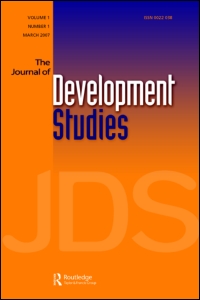 There are good reasons to believe it does.
There are good reasons to believe it does.
At least, that is the answer my coauthor Ken Lee and I come up with in a new article titled “Look Who’s Talking: The Impacts of the Intrahousehold Allocation of Mobile Phones on Agricultural Prices,” forthcoming in the Journal of Development Studies.
More specifically, in a sample of onion farmers in the Philippines, we look at whether there is a statistically significant relationship between whether anyone in a household owns a mobile phone and the price received by that household for its onions.
Failing to find any statistically significant association between the two, we then look at whether there is a statistically significant relationship between whether (i) the household head owns a mobile phone, (ii) the household head’s spouse owns a mobile phone, or (iii) any of the children in the household own a mobile phone and the price received by that household for its onions.
Here, we find a statistically significant, robust relationship between whether a household head or his spouse owns a mobile phone and the price received by that household for its onions, but no such relationship for whether any of the children own a mobile phone.
The theory behind the posited relationship between mobile phone ownership and agricultural prices is that in situations where smallholders sell to traders, mobile phone ownership should decrease the search costs associated with finding the best possible price, and therefore make it more likely that mobile phone owners receive a better price for their crops.
Caveat lector: the data we use were collected without any clear research design in mind, and so our findings should not be interpreted as causal. That is, the best we can say is that mobile phone ownership by the farmer or his spouse are correlated with higher prices.
Still, it is interesting to note that mobile phones do not seem to be the household public good many development practitioners think they are. In other words, policies designed around the distribution of mobile phones to households (rather than individuals) might contain the seed of their own failure if the intrahousehold of technology matters.
Moreover, after a referee asked us to look at whether major household surveys asked about mobile phone ownership at the household or individual level, I was surprised to find that many of those survey only collect information on the former.
So if there is one thing I would like our article to change, it’s the kind of data that are collected: We should really collect information on individual rather than on household mobile phone ownership.
For those of you who have read this far, here is the abstract of our article:
Using data from the Philippines, we study the impact of mobile phones on the prices agricultural producers receive for their cash crop. We first look at the impact on price of mobile phone ownership at the household level. Because this masks a considerable amount of heterogeneity, we then look at the impact on price of the intrahousehold allocation of mobile phones. We find that whether the household owns a mobile phone has no impact on price, but whether a farmer or his spouse own a mobile phone is associated with a 5- to 8-percent increase in price.
For those of you who’d like to see how the article has changed between the first round of revisions and its final version, the first revision can be found here.
UPDATE: One of the students in my development seminar has a post today about mobile phones and development.